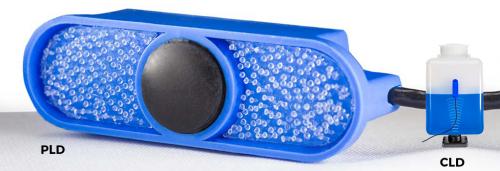How a Point Level Sensor is Different from a Continuous Level Sensor

Level sensors are used in multiple industries, including manufacturing, food and beverage, and healthcare, to monitor the levels of liquids and semi-liquids. These levels are converted into a volume to determine the amount of fluid that is present in an open-channel space.
There are two types of sensors, the continuous sensor and the Point Level Sensor, and there are key differences between each one. If you are choosing between the two, you need to consider the specific applications of the sensor, such as temperature or pressure control, or the range of measurement.

The Point Liquid Level Sensor detects liquid at a distinct point within a container to monitor high or low levels. When a company needs liquid levels to stay within a predetermined range, point liquid level sensors are more ideal than continuous liquid level sensors.
They work via a switch that is turned on or off depending on whether the fluid levels reach a specific threshold. When the switch is on, an alarm is sounded to activate a response. This can prevent expensive water damage to any equipment caused by leakages.
Non Invasive Point Liquid Level Detector equipment includes optical liquid level sensors, vertical float switches, and ultrasonic liquid level sensors. Optical sensors use an LED to transmit infrared light. They also require a Point Liquid Level Sensor to calculate variations in liquid levels based on the amount of light being reflected.
Float level sensors use a magnet that moves freely along a stem. When liquid levels rise and fall, a magnetic field is generated via the moving magnet to turn the switch on or off.
On the other hand, a continuous liquid level sensors detects the liquid levels at multiple areas of the container to provide accurate information about the whole of the vessel. As with a Point Level Sensor, continuous level options include optical, float, ultrasonic liquid level sensors.
Ultrasonic systems can use either point level and continuous level sensors. They work by transmitting regular pulses through the container. A pulse is sent and received before the next signal is sent out. This is used to accurately measure where the liquid levels are within the system.
Continuous level sensors are preferential for measurements of electrical conductivity. They can transmit an electrical current through the system via an electrode to provide information regarding the electrical resistance and density of the fluids within a vessel.
Although both the Point Level Sensor and the continuous liquid level sensor provide important feedback regarding the liquid levels in a system, each type of measurement has its strengths and weaknesses. Consider your specific needs before choosing between the two. Contact us for more information.

Comments (1)
Thanks Ayurveda3
Thanksayurveda online selling medicine
Hashmi Baby capsule - Benefits of Ayurvedic Medicine for Male Infertility Baby Capsules 60
Increases sperm motility
Make sperm healthy and stronger
Balances males hormones
Enhances semen volume and sperm count
Treats abnormality of the sperms
Increases chances of conception